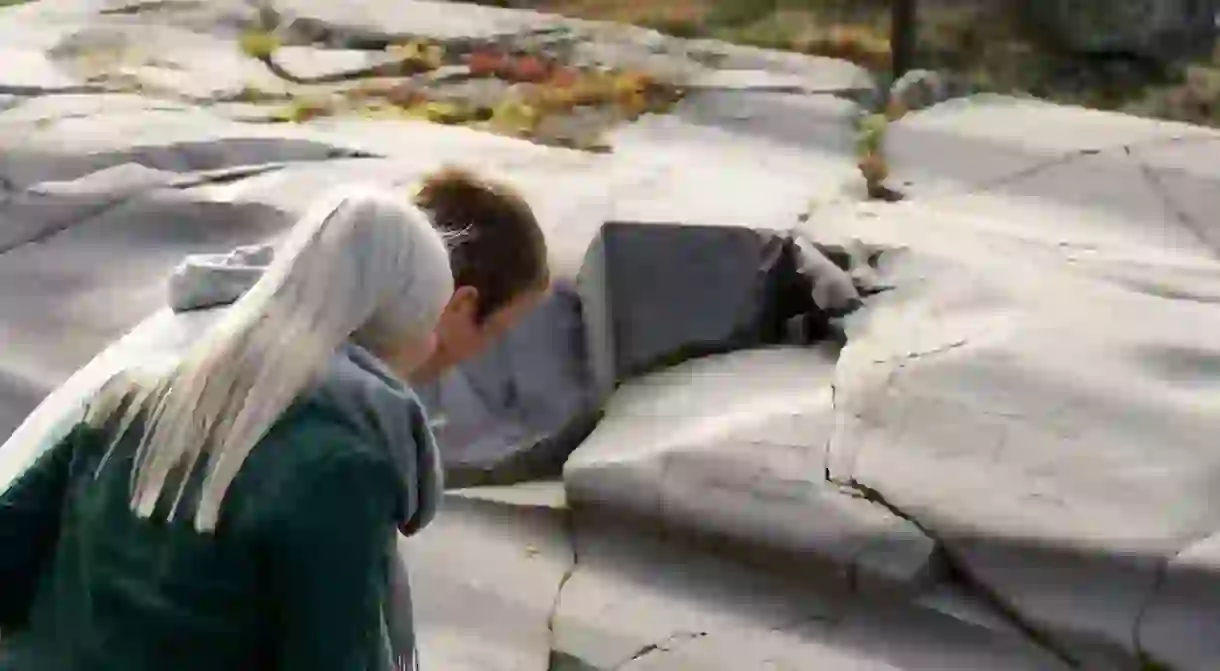Discover Norway's Spectacular Unesco World Heritage Sites

Norway is precious and should be protected at all costs. Well, parts of her, at least. This country has quite an impressive list of sites that are considered UNESCO World Heritage, as well as a list of sites that are currently being considered by UNESCO in order to be added on the list. Below we’ve gathered the ones you absolutely must visit.
Urnes Stave Church
Church

Once popular throughout the northwestern Europe, stave churches can now only be found in Norway. These elaborately carved wooden churches act as a bridge between Christianity and the medieval Viking traditions. Urnes stave church is the oldest one in the country (built around 1130 CE), and understandably a UNESCO World Heritage Site. Serenely overlooking Lusterfjord (one of the arms of Sognefjord), the church’s distinct “Urnes-style” has become a reference point when it comes to animal-ornamentation in churches.
Bryggen
Building

Alta Rock Art
Archaeological site

Some things are definitely written in stone. Like the carvings in Alta, for instance. Northern Europe’s largest concentration of rock art made by hunter-gatherers and Norway’s only prehistoric monument, the rock art of Alta depicts people, animals of the area, boats and other artefacts, as well as various geometric patterns and shapes. A UNESCO World Heritage Site since 1985, Alta comprises four sites with rock carvings and one site with rock paintings. You can learn more about the area’s unique history at the local museum.
Nærøyfjord
Natural Feature

There are more than 1,000 fjords in Norway, and every last one of them is beautiful. But there’s just something special about the fjords of West Norway: Geirangerfjord and Nærøyfjord are both UNESCO World Heritage Sites because of their length and their majestic surrounding areas. Nærøyfjord is the second arm of Sognefjord, and perhaps the most popular fjord in the country. At 17 kilometres (11 miles) long and only 250 metres (820 feet) wide, surrounded by snow-capped mountains with flowing waterfalls, Nærøyfjord is a sight you won’t soon forget.
Røros
Natural Feature

Røros, in central Norway, is one of the oldest towns with wooden buildings in Europe. The old mining town was founded in the 17th century after copper was discovered in the area, and its characteristic houses from dark wood remain practically unchanged by time. Apart from being a UNESCO World Heritage Site, Røros has also been awarded the prestigious certificate “Sustainable Destination”, as a place that works actively to reduce the environmental impact of tourism. Stroll into this museum-like town, browse its small, independent shops and explore the surrounding area – the locals will tell you that Disney’s Frozen was inspired by the people and the customs of the region.
Struve Geodetic Arc
Building

The first scientific object to be inscribed on the UNESCO World Heritage List, Struve Geodetic Arc is basically the meridian column, the invisible line that traces the Earth’s surface from pole to pole. There are similar columns in 10 countries stretching all the way to the Black Sea, but the Norwegian one in Hammerfest is the northernmost one.
Vega Archipelago
Natural Feature

Sure, you know about the Svalbard archipelago, and you’ve definitely liked many photos on Insta from the Lofoten archipelago. But did you know that Norway’s other archipelago, Vega, is actually a UNESCO World Heritage Site? Off the beaten track in the western coast of Norway, the Vega archipelago comprises 6,500 islands, reefs and skerries and has been home to fishermen since the medieval times. There are boats that can take you to the islands, as well as an eider duck museum (one of the most prominent bird species of the area).













